Murray Street, Tanunda
B 1928 J.E. Dodd; enl 1972 J.E. Dodd & Sons Gunstar Organ Works.
2 manuals, 19 speaking stops, 4 couplers, tracker & tubular-pneumatic action
Gt: 8.8.8.4.4.2.III.8. Sw: 16.8.8.8.8.4.8. Ped: 16.16.8.4.
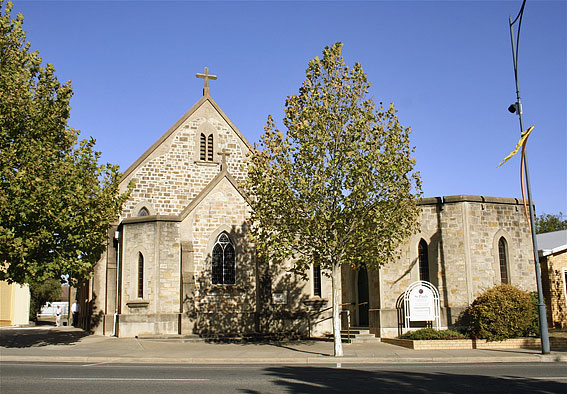
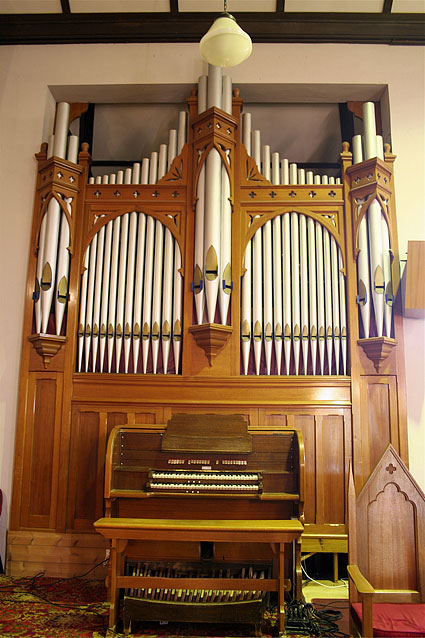
St Paul's congregation was formed in 1904 and comprised members of the Evangelical Lutheran Synod. A small wooden church rented from 1911 gave way to the present structure in 1928 and included a new pipe organ. Perhaps of interest in this specification is the Unda Maris showing well the romantic nature of Dodd's tonal structure. A tracker and pneumatic action instrument of two manuals, it saw borrowings and the addition of Fifteenth, three rank Mixture and Cornopean in 1972.
| Great Open Diapason Claribel Dulciana Principal Harmonic Flute Fifteenth Mixture Cornopean Swell Lieblich Bourdon Violin Diapason Hohl Flute Viola Unda Maris Octave Oboe Pedal Sub Bourdon Echo Bourdon Diapason Diapason |
8 8 8 4 4 2 III 8 16 8 8 8 8 4 8 16 16 8 4 |
1972 1972 1972 TC from Swell Lieblich Bourdon from Great Open Diapason from Great Open Diapason |
From
the 2009 OHTA Conference Book,
David Shield writes: The
story of St Paul’s is one of growth.
From six families in 1903, numbers grew to 100 by 1915, enabling the
call to be made to Pastor C.A. Wiebush, Superintendent of the Koonibba
Aboriginal Mission. Having rented
a small church from Mr J.A. Pfeiffer since 1911, by 1926 the congregation
decided to build a new church. Built to accommodate more than 200
people, the current building was dedicated on 23 September 1928. At this time a colourful art glass
window was provided in the apse and a new organ acquired.1 The
organ is the largest of the organs in the Barossa Valley built by J.E.
Dodd. It has tracker and pneumatic
action. The manual tracker action
was one of the last built in Australia until the 1960s: Dodd strongly advocated
this in rural churches owing to its reliability. Its compass was enlarged and three stops were added in
1972. It now has 19 stops and 1092
pipes. Of interest is the
so-called Unda Miris stop showing the romantic character of Dodd’s tonal
structure. The casework is also
typical of Dodd’s work with its three towers each containing three pipes. J.E.Dodd & Sons 1928 enlarged J.E. Dodd & Sons Gunstar Organ
Works 1972 2 manuals, 19 speaking stops, mechanical and
pneumatic action GREAT ORGAN Open Diapason 8 A Claribel 8 Dulciana 8 Principal 4 Harmc Flute 4 Fifteenth 2 (1972) Mixture III (1972) Cornopean 8 (1972) Swell to Great SWELL ORGAN Lieblich Bourdon 16 B Violin Diapason 8 Hohl Flute 8 Viola 8 Unda Miris [sic] 8 TC Octave 4 Oboe 8 Swell Super Octave Tremulant PEDAL ORGAN Sub Bourdon 16 Echo Bourdon 16 B
Diapason 8 A Diapason 4 A Swell to Pedal Great to Pedal Compass 61/30 Attached stopkey console Three thumb pistons to
Great Three thumb pistons to
Swell action tracker & pneumatic _________________________________________________________________________ 1
Brauer A., Under the Southern Cross
(1985), p.414; Church brochure: St Paul’s Lutheran Church Tanunda; A Brief
History 1904-2004; see also
section on Holy Trinity Lutheran Nuriootpa
Action: tracker and pneumatic
Compass: enlarged 1972, J.E. Dodd & Sons Gunstar Organ Works
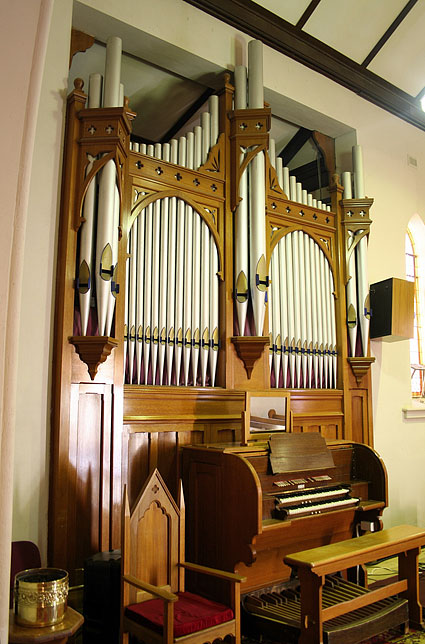
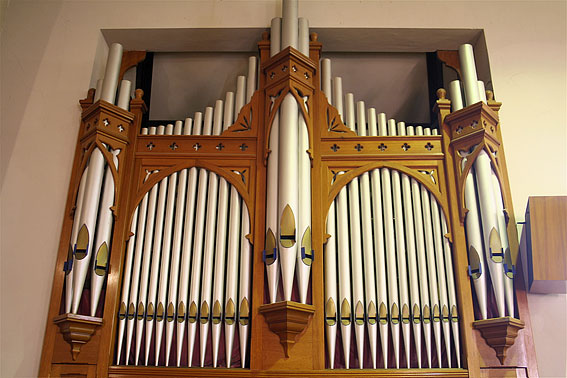
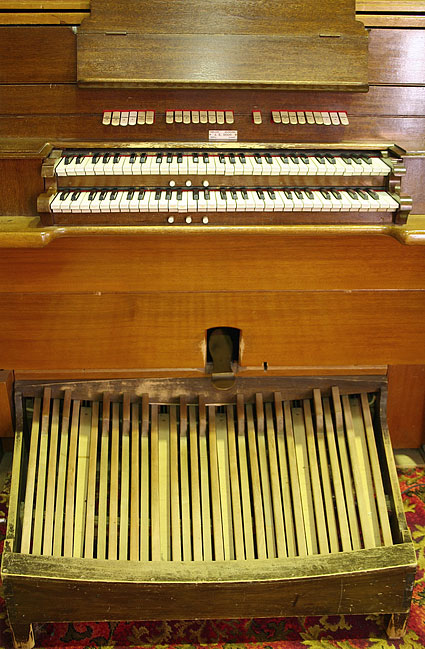
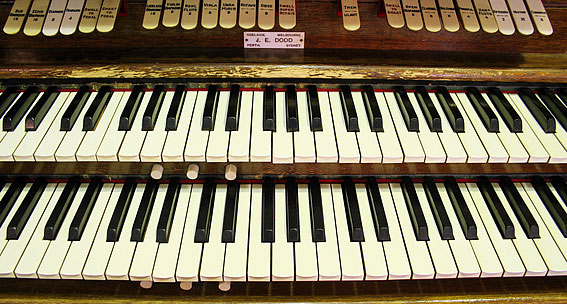
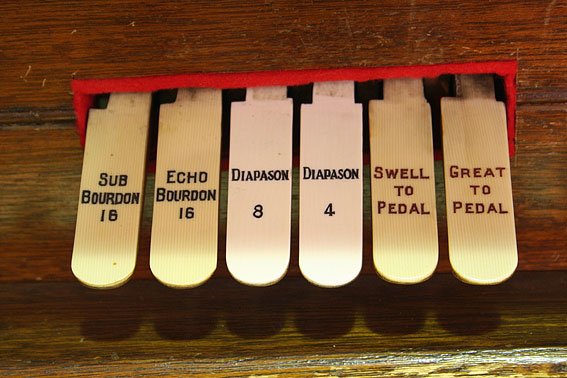


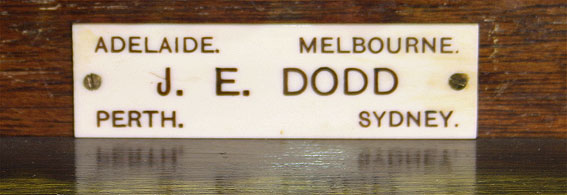
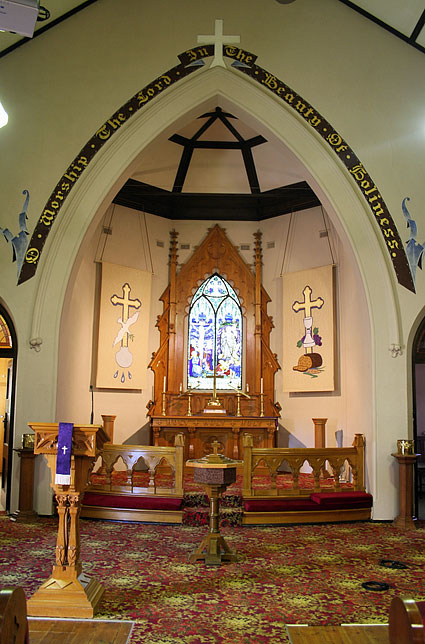
Photos: Trevor Bunning (March 2009)